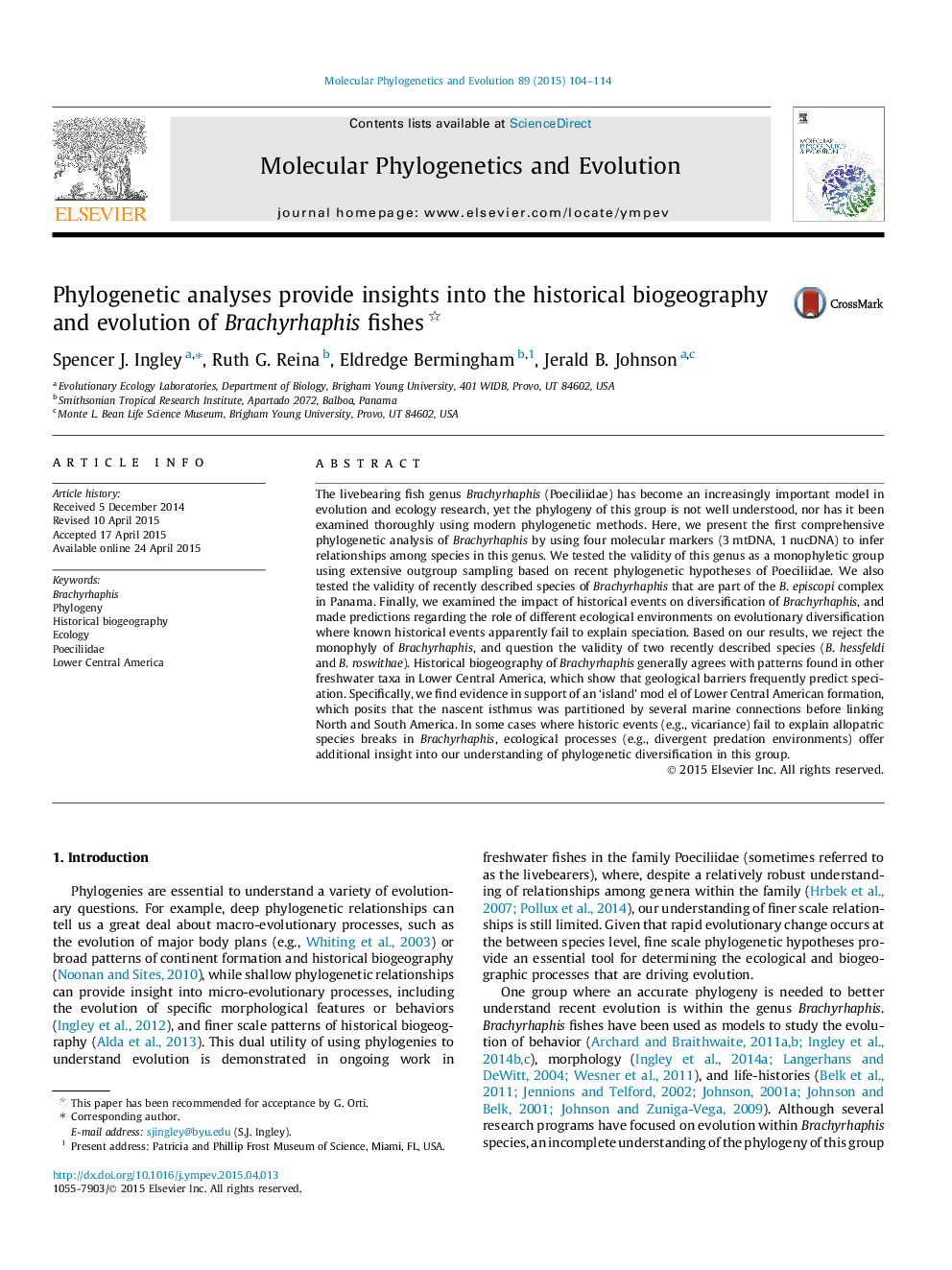| کد مقاله | کد نشریه | سال انتشار | مقاله انگلیسی | نسخه تمام متن |
|---|---|---|---|---|
| 5918889 | 1570807 | 2015 | 11 صفحه PDF | دانلود رایگان |

- A comprehensive phylogenetic analysis of Brachyrhaphis fishes is presented using four molecular markers.
- All species of Brachyrhaphis and representative species from six other genera were included in the taxon sampling.
- The resulting phylogeny rejected the monophyly of Brachyrhaphis and suggests several taxonomic revisions are necessary.
- Biogeography patterns within Brachyrhaphis support an 'island' model of Lower Central America formation.
The livebearing fish genus Brachyrhaphis (Poeciliidae) has become an increasingly important model in evolution and ecology research, yet the phylogeny of this group is not well understood, nor has it been examined thoroughly using modern phylogenetic methods. Here, we present the first comprehensive phylogenetic analysis of Brachyrhaphis by using four molecular markers (3Â mtDNA, 1Â nucDNA) to infer relationships among species in this genus. We tested the validity of this genus as a monophyletic group using extensive outgroup sampling based on recent phylogenetic hypotheses of Poeciliidae. We also tested the validity of recently described species of Brachyrhaphis that are part of the B. episcopi complex in Panama. Finally, we examined the impact of historical events on diversification of Brachyrhaphis, and made predictions regarding the role of different ecological environments on evolutionary diversification where known historical events apparently fail to explain speciation. Based on our results, we reject the monophyly of Brachyrhaphis, and question the validity of two recently described species (B. hessfeldi and B. roswithae). Historical biogeography of Brachyrhaphis generally agrees with patterns found in other freshwater taxa in Lower Central America, which show that geological barriers frequently predict speciation. Specifically, we find evidence in support of an 'island' model of Lower Central American formation, which posits that the nascent isthmus was partitioned by several marine connections before linking North and South America. In some cases where historic events (e.g., vicariance) fail to explain allopatric species breaks in Brachyrhaphis, ecological processes (e.g., divergent predation environments) offer additional insight into our understanding of phylogenetic diversification in this group.
Journal: Molecular Phylogenetics and Evolution - Volume 89, August 2015, Pages 104-114